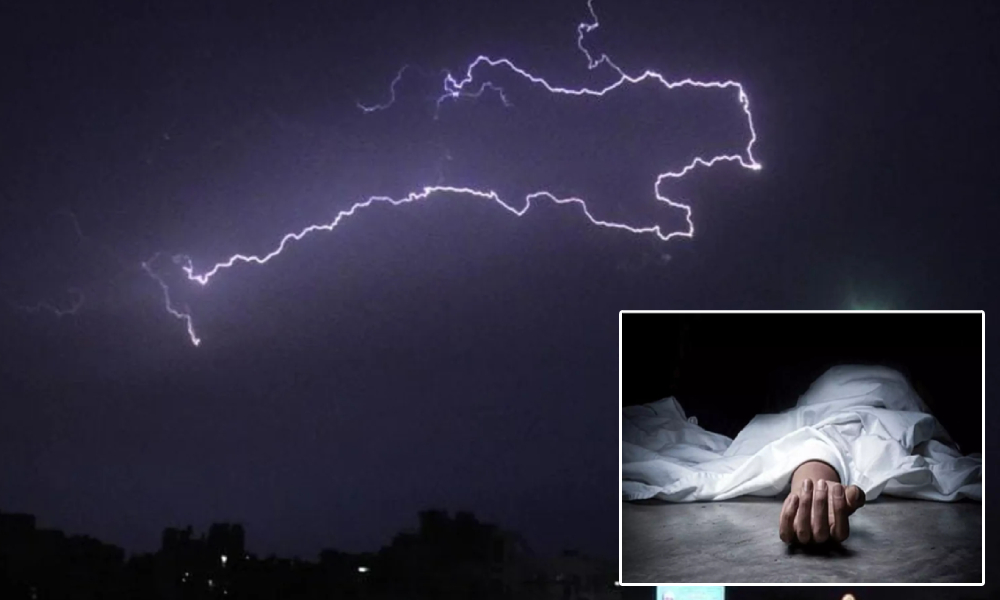
Image Credits: Hindustan Times, Live Hindustan
Lightning Kills More People Than Cyclones, Deaths Doubled Since 2004: IMD Data
Writer: Prattusa Mallik
A student of Journalism and Audio-Visual Communication, interested in words and silences alike, I aim to bring the narratives of the periphery to the centre, one story at a time. When not working, I'm usually caught reading, thinking, writing, watching Friends, or stargazing.
India, 29 Jun 2021 1:26 PM GMT
Editor : Ankita Singh |
A literature lover who likes delving deeper into a wide range of societal issues and expresses her opinions about the same. Keeps looking for best-read recommendations while enjoying her coffee and tea.
Creatives : Ankita Singh
A literature lover who likes delving deeper into a wide range of societal issues and expresses her opinions about the same. Keeps looking for best-read recommendations while enjoying her coffee and tea.
In an awareness workshop on thunderstorms and lightning on Monday, IMD scientists shared data showing an increase in annual deaths from 1,000 in 1968 to 2,500 in 2019.
India Meteorological Department (IMD) data revealed that lightning strikes killed around 2,000 people annually in India since 2004, almost double the number of deaths recorded in the late 1960s.
In an awareness workshop on thunderstorms and lightning on Monday, IMD scientists shared data showing an increase in annual deaths from 1,000 in 1968 to 2,500 in 2019. The reason behind this might be lying in the climate crisis.
Reason: Decreasing Green Cover
SD Pawar, Project Director of Thunderstorm Dynamics, Indian Institute of Tropical Meteorology (Pune), said that between 1995 and 2004, lightning incidents in India have increased by 30% to 40%. The number of deaths has also risen significantly since the 1990s.
Pawar's research hinted that lightning deaths were more in areas with a decreased tree cover. In areas with thick tree cover, lightning strikes the tree and dissipates in the ground. However, in areas with thin tree cover, people working on-ground are more exposed to lightning strikes.
"In Marathwada, for example, we have noticed that tree cover is very thin. People working outside often run to a lone tree to take shelter underneath and are then struck by lightning," said Pawar, as reported by Hindustan Times.
Reason: Shift In Rural Lifestyle
However, Atul Sahai, Vice President of the Indian Meteorological Society, looked at the reason differently.
Researchers said that in the last few years, tropical cyclones had killed less than 50 people. But lightning deaths have been 50 times more than that. For example, lightning strikes across districts in West Bengal caused at least 27 deaths on June 7. This number is more than the number of deaths caused by Cyclone Yaas that had hit the state earlier.
And the June 7 deaths occurred despite IMD warnings. Sahai inferred that the warning often does not reach remote areas, given that lightning is a very localised phenomenon.
On the other hand, IMD Director General M Mohapatra said that the change in lifestyle of the rural population in the last 30 years also might have exposed them more to lightning. For instance, now more people work in fields or orchards, which can contribute to the deaths. Also, lighting can interfere with the electromagnetic field of electrical appliances — the use of which has dramatically increased in the last 30 years — be it mobile phones or power lines.
Several studies have shown that there is a clear relationship between the increase in lightning and climate change. Between 2010 and 2020, lightning strikes have occurred more in the Arctic Region.
According to a Geophysical Research Letters study published in April, the number of summertime bolts above Alaska has increased from nearly 35,000 to 2,40,000, more than six times.
Also read: Climate Change May Result In 3-10% GDP Loss Annually By 2100: Report
 All section
All section













